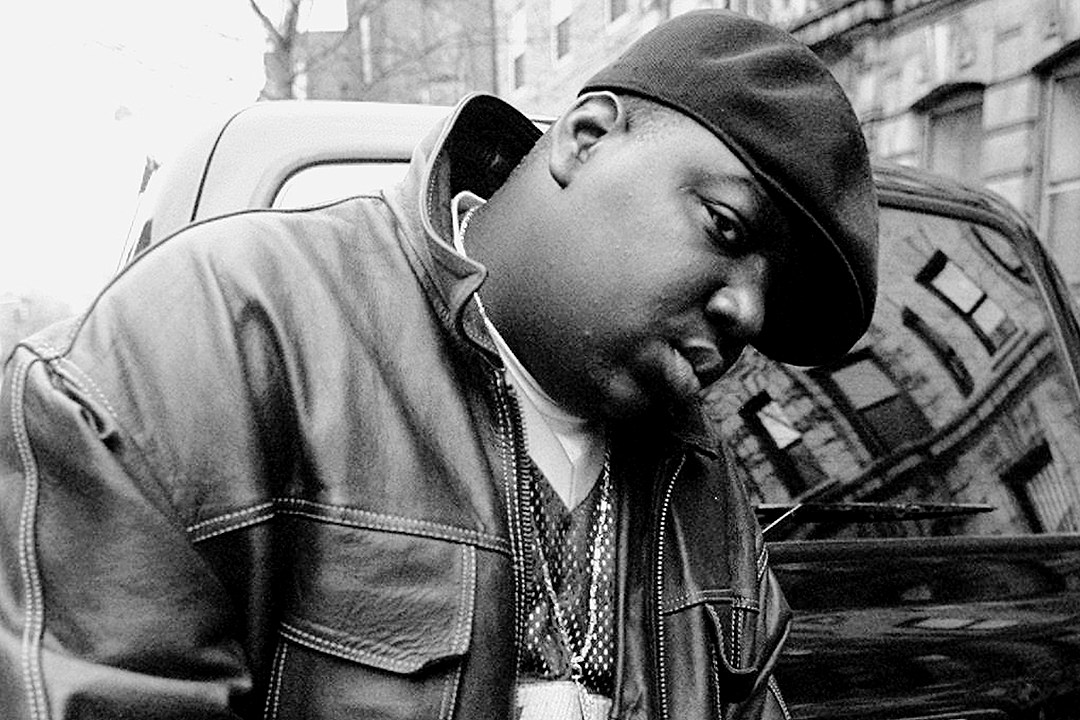


In July he was arrested again for marijuana and gun possession. In March of 1996 he was arrested for assault after taking a bat to a taxi cab window following a run-in with some autograph seekers. There were the normal demands of becoming a father and husband following his marriage to Faith Evans in 1994, but there were thornier issues as well. Problems innumerable crept in and complicated Biggie’s life. But heavy is the head that wears the crown. His position was the undisputed King of New York rap. This record is about me and my position.” “I’m not on the streets anymore,” he told Spin magazine in 1997. He knew he couldn’t recreate Ready To Die, because the person you hear on “Gimme The Loot” and “Everyday Struggle” no longer existed. His life was filled with different desires and different problems. He had grown affluent while also becoming incredibly famous. In the eighteen months it took for him to put together his second record, Biggie’s world was changing dramatically. Audiences bought in completely and the album remains one of the most celebrated debut releases ever issued by an MC. He was a lyrical virtuoso and a storyteller without peer. At the center of it all stood the Notorious B.I.G., a local kingpin, a willing lover, and a terrifying enemy if you crossed him. You’re not going to get to see that if you’re out there wilding.”īiggie’s first album Ready To Die was a hard-hitting, live report from the gritty streets of Brooklyn, as seen through the eyes of a mid-tier drug dealer, slinging, shooting and f*cking his way through life, knowing it can all end at any minute. “I want to go to my daughter’s wedding and my son’s wedding, and I want to watch them get old. “I wanna see my kids graduate,” he told the paper. A future that once seemed so bleak, now had vibrancy. “There was nothing but anger coming out.” Everything had flipped since then. “I call the album Life After Death because when I was writing stuff like ‘ the world, my Mom and my girl’ on Ready To Die, I was dead, yo,” Biggie explained to the Los Angeles Times in 1997. Instead, it was meant to mark the next chapter in the life and career of “The King of New York.” Make no mistake though, Life After Death was never intended to be a farewell or a final statement. Biggie was gone.īecause of the incredible circumstances surrounding Life After Death at the time it dropped, not to mention it’s prophetic title and somber cover image, there’s a sense of grim finality that has engulfed the project in the minds of fans and casual observers alike. He was rushed to Cedars-Sinai Medical Center, but there was nothing the doctors could do. Sixteen days earlier, on March 9th, Christopher Wallace was gunned down while sitting at a stoplight in an SUV at the corner of Wilshire Blvd. Sadly, the man behind the mic wasn’t around to celebrate when it finally arrived in stores. It quickly became one of the most hotly anticipated releases that year and one of the most buzzed-about records in the history of rap.

In the weeks and months leading up to that date, the buzz for the record took on a life of its own. Life After Death, the Notorious B.I.G.’s super-sized, sophomore album dropped 20 years ago on March 25, 1997.


 0 kommentar(er)
0 kommentar(er)
